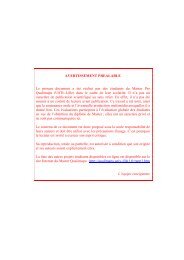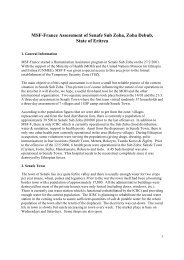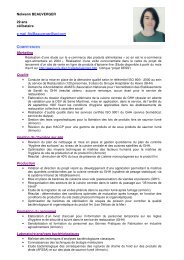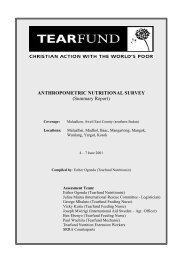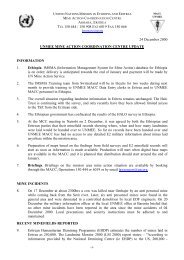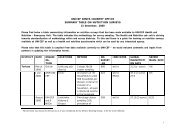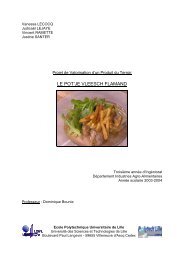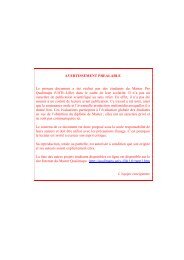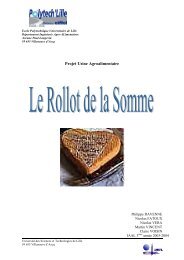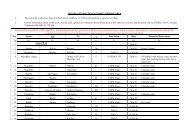IDPs (ACF) - PFEDA / Page d'accueil PFEDA
IDPs (ACF) - PFEDA / Page d'accueil PFEDA
IDPs (ACF) - PFEDA / Page d'accueil PFEDA
You also want an ePaper? Increase the reach of your titles
YUMPU automatically turns print PDFs into web optimized ePapers that Google loves.
METHODOLOGY<br />
The target population for the survey was children aged between 6 and 59 months. This<br />
age group is considered to be particularly vulnerable to malnutrition.<br />
1. Survey Design<br />
Classic two-stage cluster sampling was used for the survey. A total of 30 clusters of 30<br />
children aged 6 to 59 months old were selected in order to provide an estimate of the<br />
prevalence of malnutrition with a minimum 5% confidence.<br />
2. Sampling methodology<br />
Initially a sampling framework was constructed from which a representative sample<br />
could be drawn from. Population figures were collected from a variety of sources (<strong>ACF</strong><br />
Water and Sanitation Team, <strong>ACF</strong> Health Education Team Statistics and IDP camp<br />
Elders). Only camps that were accessible to <strong>ACF</strong> were included in the sampling<br />
framework. Annexes 3 and 4 details those camps the camps and their populations that<br />
were included in the survey as well as those that could not be included.<br />
The percentage of children less than 5 years was then estimated at 20% and the<br />
cumulative target population determined. For each section of the town the estimated<br />
population, and the estimated number of children under 5 was then listed. The cumulative<br />
population of children under 5 years old was then calculated by adding at each stage of<br />
the list the number of children under 5 years to the total of the number of children under 5<br />
years in the previous section(s) of the town.<br />
Thirty clusters were randomly selected. The cluster interval was calculated by dividing<br />
the total cumulative population under five years old by the number of clusters: (22962 /<br />
30 = 765). A random number was then chosen between one and the cluster interval using<br />
a random number table to have a starting number (51) for the first cluster. The following<br />
29 clusters were selected systematically by adding the cluster interval number to the<br />
previous cluster. Details can be found in Annex 5.<br />
Once this list had been completed, the <strong>ACF</strong> Health Education team visited each chosen<br />
cluster prior to the day of the survey to inform the people about the survey, the purpose of<br />
the survey, and to ask that the population of the cluster stay at home on the day of the<br />
survey.<br />
The second stage of sampling was carried out in the cluster. In general, one member of<br />
the team went to the centre of the chosen area with the chief of the community and threw<br />
a pencil to determine a direction and all the households following this direction were<br />
visited and all the children found in the houses between 6 and 59 months, and between 65<br />
and 110 cm, were screened. However, due to the nature of the IDP camps in Mogadishu<br />
10



